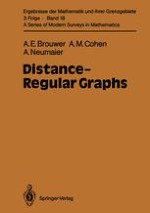Ever since the discovery of the five platonic solids in ancient times, the study of symmetry and regularity has been one of the most fascinating aspects of mathematics. Quite often the arithmetical regularity properties of an object imply its uniqueness and the existence of many symmetries. This interplay between regularity and symmetry properties of graphs is the theme of this book. Starting from very elementary regularity properties, the concept of a distance-regular graph arises naturally as a common setting for regular graphs which are extremal in one sense or another. Several other important regular combinatorial structures are then shown to be equivalent to special families of distance-regular graphs. Other subjects of more general interest, such as regularity and extremal properties in graphs, association schemes, representations of graphs in euclidean space, groups and geometries of Lie type, groups acting on graphs, and codes are covered independently. Many new results and proofs and more than 750 references increase the encyclopaedic value of this book.
